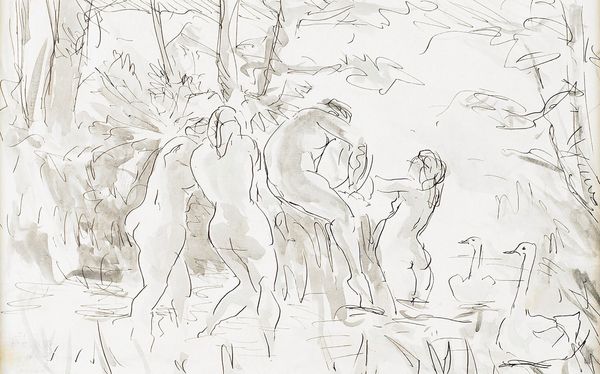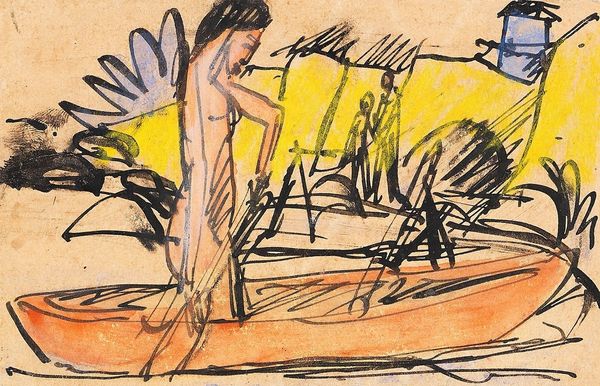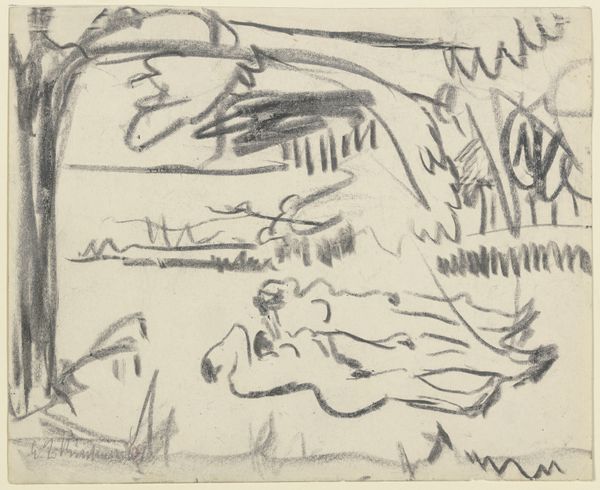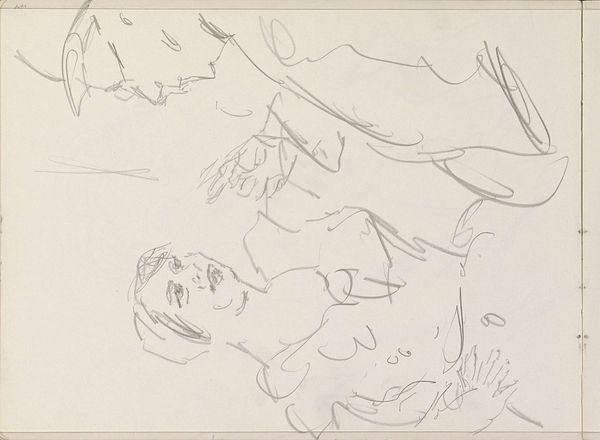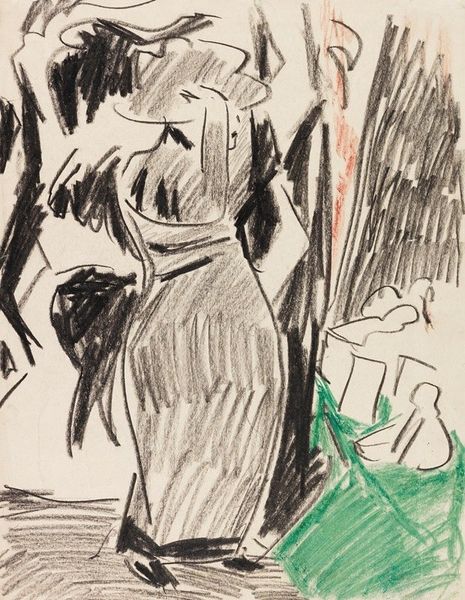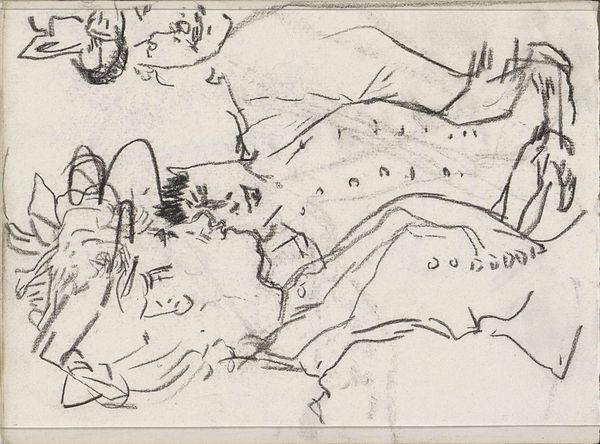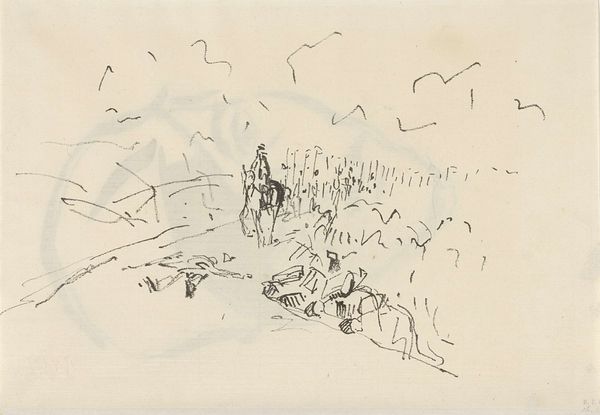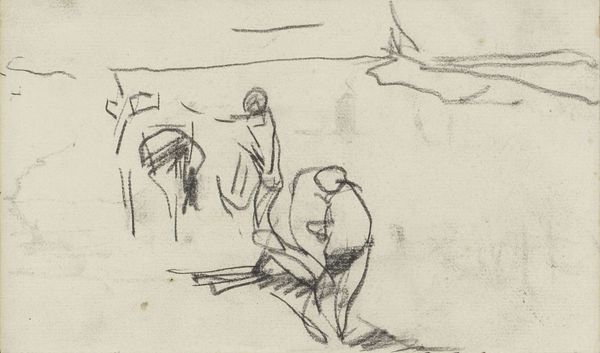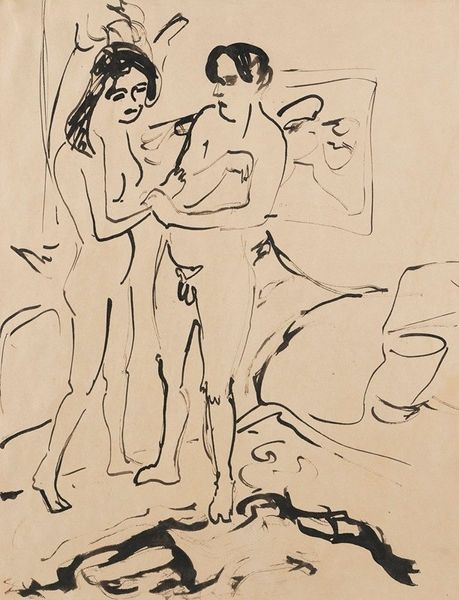
drawing, paper, ink
#
drawing
#
ink drawing
#
pen sketch
#
landscape
#
figuration
#
paper
#
ink
#
expressionism
#
nude
Copyright: Public Domain: Artvee
Curator: The gestural quality of this work immediately grabs your attention. It's Ernst Ludwig Kirchner’s "Two Bathers at Fehmarnküste," dating back to 1912. Executed in ink on paper. What are your first thoughts? Editor: Stark and almost aggressively unfinished. The linework practically vibrates. Is it supposed to evoke a sense of freedom or perhaps anxiety, rendered with such immediacy and apparent rawness? Curator: Kirchner was a central figure in Die Brücke, an important Expressionist group. Looking at this drawing in relation to their overall project—the liberation of art and the embrace of direct experience—illuminates his process. The visible immediacy of the pen strokes speaks volumes. He really seems to be capturing a raw, visceral moment. What's fascinating here is how this piece blurs the boundaries between a preliminary sketch and a finished work. Editor: True, the speed is evident, like catching a fleeting moment. But, thinking about the institutional aspect, how did Expressionists navigate the art world? Did galleries readily accept such apparently unfinished work? Were there critics who appreciated it? Curator: Acceptance was definitely a battle. Expressionism challenged traditional academic standards of finish and subject matter. Figures like Kirchner actively sought alternative exhibition spaces to showcase their work. Think of spaces beyond established museums and academies, emphasizing the direct engagement with the public. Also, consider that Kirchner, through Die Brücke, wanted to merge life and art; these works allowed them to get there directly and without artifice. Editor: So, this rawness, in a sense, became a declaration of artistic autonomy. Almost a refusal to conform to bourgeois taste and the academic art system. The materiality of ink, swiftly applied on paper, as an act of defiance itself. I wonder, does this piece invite us to reconsider notions of 'high' and 'low' art? To question value judgments associated with different methods and media? Curator: Precisely. The visible process democratizes the art object. He elevates the sketch to a primary mode of expression. The materials –simple ink and paper, suggest accessibility challenging art as rarefied object. Kirchner shows us what labor and emotion went into its creation. Editor: Kirchner challenges traditional hierarchies while leaving us to wonder about the role of institutions, their limitations and even, sometimes, their complicity in what's considered "art." I am intrigued to explore these artists more deeply. Curator: Yes, the drawing serves as a potent reminder to question established narratives. It also provokes reevaluation of what constitutes "art" in a rapidly changing social context.
Comments
No comments
Be the first to comment and join the conversation on the ultimate creative platform.
